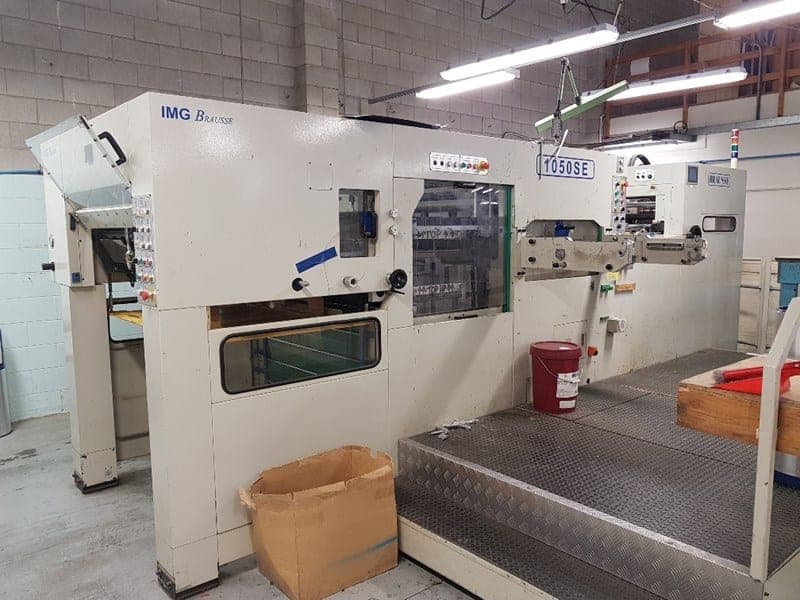- Home
- /Learning Hub
- /Blog
- /Types Of Packaging Die Cutting Machines
Knowledge
25/08/2018
The Pakko Team
Types of packaging Die cutting machines

Die cutting machines have a number of applications in the cardboard and packaging industry, such as forming, cutting and shaping cardboard. Using templates, or molds, the die is customized with the final product in mind. There are several traditional varieties of die cutters, including rotary, press, and flat bed die cutting machines, although newer forms have been gaining ground within the industry. At Pakko we use a variety of Die Cutters to create a large range of cardboard packaging. We will cover 3 main types of industrial die cutting machines.
 Automatic flatbed Die Cutting
A flatbed cutting machine uses varying degrees of hydraulic pressure to stamp shapes with a steel rule die. These machines are effective for making precision kiss-cuts, butt-cuts, and die-cuts to sheets and laminates.The benefits of flatbed die cutting include lower tooling costs, greater tolerance on materials over 1/8 inch thickness, and high design flexibility. Flatbed die cutting machines are efficient for low volume orders, projects involving many different kinds of shapes, or applications in which no material curvature is needed.
Automatic flatbed Die Cutting
A flatbed cutting machine uses varying degrees of hydraulic pressure to stamp shapes with a steel rule die. These machines are effective for making precision kiss-cuts, butt-cuts, and die-cuts to sheets and laminates.The benefits of flatbed die cutting include lower tooling costs, greater tolerance on materials over 1/8 inch thickness, and high design flexibility. Flatbed die cutting machines are efficient for low volume orders, projects involving many different kinds of shapes, or applications in which no material curvature is needed.
Rotary Die Cutting (Used for thicker corrugated cardboards)
Rotary die cutting machines feature a cylindrical anvil and die fabricated from a single piece of tool steel. As sheets of material is fed through the machine, a series of quick and accurate cuts modify the metal. The process is best suited for high volume projects or "kiss cutting," in which punctures must be made through the material without piercing the fabrication liner. In high volume production, Rotary die cutting machines can increase productivity while reducing material waste. The machinery is well-suited for precision cutting at low tolerances and can also be used in conjunction with other processes.Press clamshell Die Cutting
Press clam-shell die cutting machines typically feature a cutting die that is fixed in position with the motors driving the pressing plate in to the Die, the mechanism opens and closes similar to a Clam shell, hence its name!. The die's cutting action can be controlled by electric, hydraulic, pressurized, or manual sources. Depending upon the application, the die may cut and form a single piece of material or the material may be stacked to produce multiple copies at a time. Automatic flatbed Die Cutting
A flatbed cutting machine uses varying degrees of hydraulic pressure to stamp shapes with a steel rule die. These machines are effective for making precision kiss-cuts, butt-cuts, and die-cuts to sheets and laminates.The benefits of flatbed die cutting include lower tooling costs, greater tolerance on materials over 1/8 inch thickness, and high design flexibility. Flatbed die cutting machines are efficient for low volume orders, projects involving many different kinds of shapes, or applications in which no material curvature is needed.
Automatic flatbed Die Cutting
A flatbed cutting machine uses varying degrees of hydraulic pressure to stamp shapes with a steel rule die. These machines are effective for making precision kiss-cuts, butt-cuts, and die-cuts to sheets and laminates.The benefits of flatbed die cutting include lower tooling costs, greater tolerance on materials over 1/8 inch thickness, and high design flexibility. Flatbed die cutting machines are efficient for low volume orders, projects involving many different kinds of shapes, or applications in which no material curvature is needed.Tags:Knowledge
Last Updated:05/01/2022
